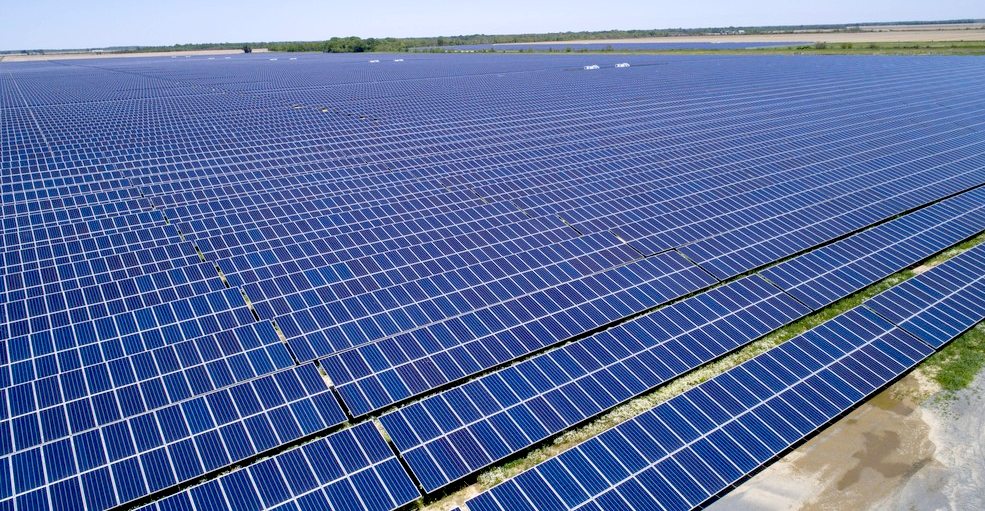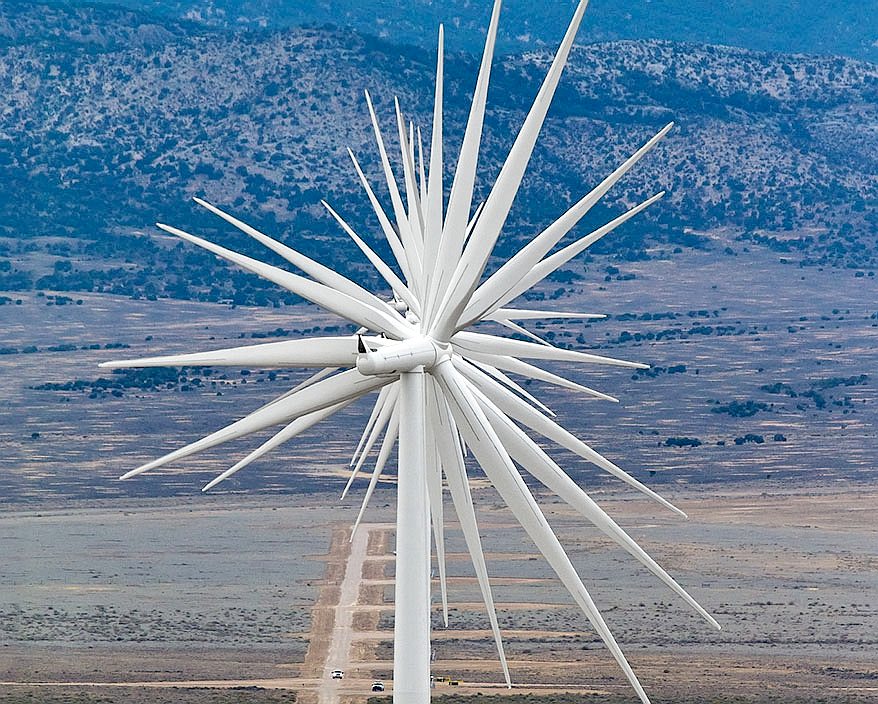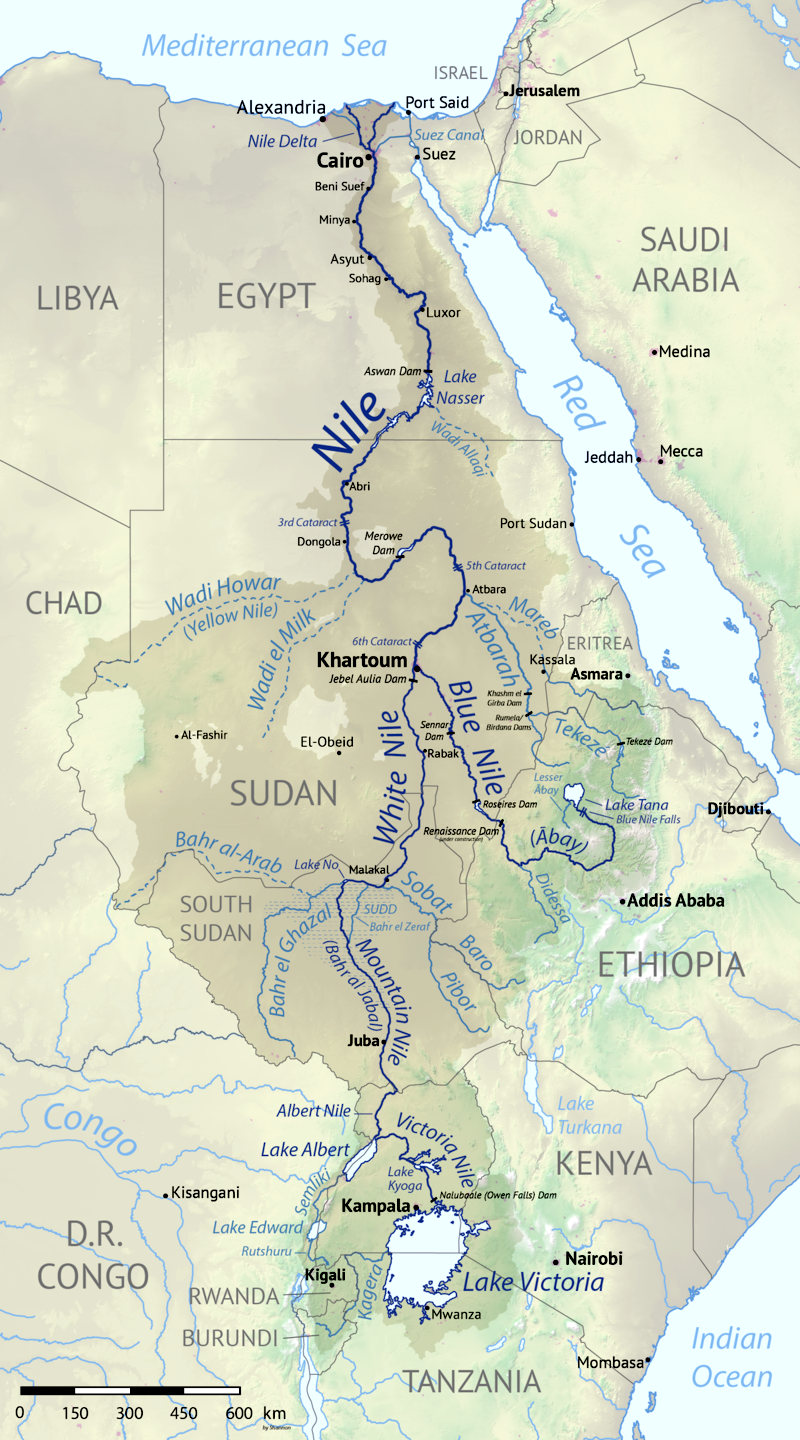
Power generation accounts for 30% of global CO2 emissions. To achieve net zero, we need to replace fossil fuel-based power plants with renewable energy and increase the share of carbon-free electricity from about 20% to at least 75% by 2030. We also need to invest in battery storage to manage intermittent renewable sources.
With
such vast areas of desert available to African and Middle
Eastern nations, their transformational opportunities are
limitless, helping to combat global warming and still
retain, or even improve export potential. But are
their natural resources being fully utilized in the
transformation to a carbon neutral, or net
zero society.
Why is the world
fighting shy of decarbonizing their economies? Why is it
taking so long to adapt?
Decarbonisation
and plays a crucial role in combating global warming and climate change,
and despite the urgency, the economic complexities and
vested interests have a braking effect. Commonly known as
Red Flag politics. Hoisting flags to progress. Something
along the lines of the resistance to the Marine Chronometer
of John Harrison battling the Board of Longitude, where it
eventually took another Act of Parliament to give the
inventor his prize money. Or coach companies insisting on
drivers of motor vehicles, must have a man running ahead,
holding a red flag. Crazy stuff! But an Act of Parliament
regardless of the foolhardiness of holding back progress.
Passed by intelligent men, but with investments in horses,
not the future, clouding their judgment.
Charles Rolls of Rolls-Royce fame, was one of the protestors
to such lunacy.
It
was the same with the paddle-wheel versus propellers,
favoured by Isambard
Kingdom Brunel on his Great Eastern. The British
Admiralty refused to accept that a propeller was more
efficient than a paddle-wheel steamer. The inventor, John
Ericsson, showed them the error of their ways with a tug
of war, towing the paddle steamer backwards, both ships
using identical engines. Parson's 'Turbinia'
upset the British Admiralty again with his steam turbine
outperforming piston engines at Queen Victoria's Spithead
Review in 1897, where, before that dramatic demonstration of
speed he was ignored, in traditional Red Flag fashion.
All
of these examples seem ridiculous now, but they did happen,
and to some extent, they are still happening. Otherwise we
would surely have met the targets of the Paris
Agreement from 2015. Nine years on, and what progress!

SOLUTIONS
To keep the planet from warming more than 1.5°C above pre-industrial levels, most countries have goals to reach net zero by 2050. Net zero means that all greenhouse gas emissions produced are counterbalanced by an equal amount of emissions that are eliminated. Achieving this will require rapid decarbonization.
There are two aspects to decarbonization. The first entails reducing the greenhouse gas emissions produced by the combustion of fossil fuels. This can be done by preventing emissions through the use of
zero-carbon renewable energy sources such as wind, solar, hydropower, geothermal and biomass, which now make up one-third of global power capacity, and electrifying as many sectors as possible. Energy efficiency will reduce the demand for energy, but increasing electrification will increase it, and in 2050, the demand for power is expected to be more than double what it is today.
To keep the planet from warming more than 1.5°C above pre-industrial levels, most countries have goals to reach net zero by 2050. Net zero means that all greenhouse gas emissions produced are counterbalanced by an equal amount of emissions that are eliminated. Achieving this will require rapid decarbonization.
There are two aspects to decarbonization. The first entails reducing the greenhouse gas emissions produced by the combustion of fossil fuels. This can be done by preventing emissions through the use of zero-carbon renewable energy sources such as wind, solar, hydropower, geothermal and biomass, which now make up one-third of global power capacity, and electrifying as many sectors as possible. Energy efficiency will reduce the demand for energy, but increasing electrification will increase it, and in 2050,
the demand for power is expected to be more than double what it is
today.
For example, for the U.S. to reach its net zero goal, it must go from generating about 20 percent of
electricity from carbon-free sources today to at least 75 percent by 2030. This will require increasing
renewable energy generation and (unfortunately) maintaining dirty nuclear energy sources if the nuclear power plants are safe. Coal plants must be retired or retrofitted to capture 90 percent of their emissions.
COLUMBIA UNIVERSITY
According to the Brookings Institution, achieving net zero by 2050 is technically and economically feasible with current technologies and those in development,
except it will require enormous behavioral changes, rigorous new policies, and international cooperation.
Unfortunately, making it a tall order, and potentially
impossible.
One thing that makes decarbonization challenging is that while
profitable over the long-term, it will require significant investments in the short term. It
is estimated that for the US, it could take $275 trillion between 2021 and 2050 to decarbonize the sectors above, with power generation, transportation, and buildings using 75 percent of the spending on physical assets.
Research has predicted that to completely decarbonize industry would take four to nine times as much zero carbon
electricity as it would if we do nothing to decarbonize, so the cost of electricity is expected to rise as renewable resources are expanded and the grid infrastructure is built out. Eventually the price of electricity from renewable sources will likely drop because of lower operating costs, but consumers may initially face higher energy costs.
The single biggest challenge to decarbonization is how much money has been invested in the grid and fossil fuel infrastructure,
according to Steve Cohen, a professor in the practice of public affairs at Columbia University’s School of International and Public Affairs, and director of the Research Program on Sustainability Policy and Management. “The average person has also invested a lot in fossil fuels through their boilers and
gas guzzler cars. So, the challenge will only be overcome when renewable energy
becomes so cheap and convenient that it will drive fossil fuels from the
market.
Renewable energy also threatens the business model of the grid where people pay utilities for their power, and fossil fuel interests are pushing back, Cohen added. For example, the California Public Utilities Commission is considering a “grid integration” tax on people who feed extra energy from their solar arrays back to the grid.
Reaching 100 percent decarbonization also depends on new technologies that are still costly and not yet at scale. Biofuels are expensive and supplies are limited since they could compete with
food for land. Carbon capture, utilization, and storage is effective but will require technological improvements and scaling up to reduce its cost. Bioenergy carbon capture and storage, where biomass such as wood pellets or agricultural waste is burned for fuel and the emissions are captured and stored, is a relatively new technology, and has not yet been scaled up. Green hydrogen, produced through the electrolysis of water using renewable energy, costs three times as much as natural gas in the U.S.
“The government needs to make massive investments in science and into these new technologies to accelerate the decarbonization process,” said Cohen. Private investors are eager to invest in green technology, but the lack of consistent and long-term policies to ensure continuing carbon reduction efforts makes investing risky.
That is why a wide range of policies that set performance standards and goals and provide incentives to reward CO2 reduction are needed to drive investment into low-carbon technologies. A global carbon tax would also help push economies to decarbonize though it would further raise the cost of energy. The policies that are needed to spur progress towards decarbonization are difficult to enact, however, because of political polarization and lobbying efforts by the fossil fuel industry.
IPCC REPORT
The latest report by the IPCC found that climate change is occurring so rapidly that humans may not be able to adapt to its impacts. What is needed to help stymie the attempts to further impede climate action is a citizenry that is better
educated about climate impacts, the critical need to decarbonize, and what it will require. Moreover, it’s important that there are measures in place, such as subsidies to offset higher energy prices, to ease any resulting economic burdens, particularly for disadvantaged and low-income communities.
We should then focus on a consensus that we can build on: modernizing our vulnerable and antiquated
energy
grid. A modern, lower cost energy system that is less polluting is something everyone should find appealing because we all rely on energy. We all need energy to live and for life.
MIDDLE
EAST & NORTH AFRICA (MENA)
The Middle East and North Africa
region boasts vast deserts, covering roughly 80% of its landmass.
Representing a vast under-exploited resource for humanity.
MENA enjoys some of the highest solar irradiation (insolation)
levels globally, making it ideal for solar energy generation.
MESIA OUTLOOK REPORT 2023:
The Middle East Solar Industry Association (MESIA) Outlook Report 2023 is a comprehensive analysis of the solar energy sector in the Middle East and North Africa
(MENA) region.
MESIA Outlook Report 2023: Projects MENA's green hydrogen production to account for 20% of global output by 2040, requiring significant solar farm development. This implies utilizing a sizable portion of suitable desert land but avoids specifying an exact figure.
Clearly then, surveying desert assets is an important first
step in identifying the best locations.
Individual projects: Large-scale initiatives like Saudi Arabia's NEOM and the Green Hydrogen Coalition target converting thousands of square kilometers in specific desert areas for green hydrogen production.
The
key is smart
networks, an intelligent infrastructure, to join the
dots.

NEOM
- Mohammed bin Salman's Vision for 2030
SAUDI ARABIA'S 'NEOM' PROJECT:
NEOM is a $500 billion megacity project envisioned as a futuristic, technology-driven city in northwestern Saudi Arabia. It aims to be a model for sustainable living and economic diversification, focusing on:
- Renewable
energy: NEOM plans to be powered entirely by renewable sources, including solar and wind energy.
- Green hydrogen production: Large-scale solar farms integrated with
electrolyzers are planned to produce
green hydrogen for export and domestic use.
NOTE: NEOM the acronym, doesn't actually stand for any specific abbreviation. While some initial speculation focused on it being linked to words like "New Era of Modernity" or "Neo-Mostaqbal" (referencing the Arabic word for future), official sources have clarified that this isn't the case.
The NEOM name is a portmanteau, meaning it blends elements from different languages to create a new word. Here's a breakdown:
"Neo": This comes from the ancient Greek prefix "neo," meaning "new."
"M": This letter has two
interpretations.
Arabic origin: It represents the first letter of the Arabic word for "future" (مستقبل,
Mustaqbal).
Personal reference: It also references the first letter of
Crown Prince Mohammed bin
Salman's name, who spearheaded the NEOM project.
So, while NEOM doesn't hold a specific acronym, it combines elements signifying "new" and "future," reflecting the project's ambition to be a groundbreaking and forward-thinking city.

The
earliest surviving electricity generating station with
battery load leveling is just outside the village of Herstmonceux
in Sussex, England. Electricity was generated as DC at
48 volts via a National
gas engine and town gas made from coal, supplying the
whole village. The oak saplings above were nursed on the
premises from local acorns.
WHAT IS DECARBONISATION?
Decarbonization simply means reducing the amount of carbon dioxide (CO2) released into the atmosphere. This comes primarily from
human activities like burning
fossil fuels for energy, transportation, and industrial processes.
Decarbonization refers to the process of reducing carbon dioxide (CO2) emissions from human activities.
The ultimate goal is to achieve net zero emissions, where any emissions produced are offset by an equal amount of emissions removed from the atmosphere.
Why is it important?
CO2 is a greenhouse
gas, meaning it traps heat in the atmosphere. As CO2 levels rise, the
planet warms, leading to
global
warming. This warming triggers a domino effect of climate change impacts, including:
- Rising sea
levels: Threatening coastal communities and ecosystems.
- More extreme weather events: Like heatwaves, droughts, floods, and
wildfires.
- Changes in precipitation patterns: Affecting agriculture and
water availability.
- Ocean
acidification: Harming marine life and ecosystems.
These impacts are already being felt worldwide, and delaying action will only make them worse.
HOW DOES DECARBONISATION HELP?
By reducing CO2 emissions, we can slow the rate of global warming and potentially avoid the most catastrophic effects of climate change. This involves:
- Shifting to renewable energy sources: Like solar, wind, and geothermal, which produce little to no CO2.
- Improving energy efficiency: In buildings, appliances, and industrial processes.
- Transitioning to electric vehicles: And public transportation, reducing emissions from the transportation sector.
- Protecting forests: Forests absorb CO2 from the atmosphere, so
deforestation worsens the problem.
- Developing carbon capture and storage
technologies (planting
trees) to remove CO2 from emissions or the atmosphere.
Challenges and opportunities:
Decarbonisation is a complex undertaking with economic, social, and technological challenges. However, it also presents immense opportunities for:
- Creating new jobs in clean energy and technology sectors.
- Improving public health and air quality.
- Building a more sustainable and resilient future for all.
Decarbonization is not just a technical solution; it's a global imperative for the well-being of our planet and future generations. The urgency of climate change demands swift and collective action at all levels - from individuals to governments and businesses - to accelerate the transition to a low-carbon future.

PR
& INVESTMENT OPPORTUNITY - The general move to decarbonisation
makes technology like this a live invest-able opportunity,
alongside the positive public relations the project could
generate, along the lines of the media exposure generated by
Planet Solar, when the Swiss/German/French team set the
first solar powered record around the world.

INDUSTRY
Industrial processes — such as steel, cement, and chemical production as well as oil, coal and gas extraction and refining — produce 30 percent of global CO2 emissions and 33 percent of methane emissions.
This sector is one of the hardest to decarbonize because steel, cement, and chemical production may require temperatures of 1600°C or more, which are easily produced by fossil fuel combustion, but difficult to achieve through electrification. Though most aluminium smelting is electric. To electrify this intense heat generation would require significant changes to furnaces and so much energy that it may prove to be economically unfeasible.
To truly decarbonize industry, production processes will need to be redesigned. Energy efficiency in industry can be increased through integrating processes, whether through initial design, retrofitting, or making operations more energy efficient. Cogeneration, where wasted heat is used to produce additional heat or
electricity for the plant itself, and clustering plants at one site, which allows for synergy of operations or resources, are examples of process integration.
Processes should be electrified with renewable energy where possible. Sustainably produced biomass can be used for fuel at some cement factories and new steel plants, and for ethylene and
ammonia production. Steel can be also produced through charcoal combustion rather than
coal; charcoal is considered a renewable energy source since it comes from
wood which grows relatively quickly. And
ammonia, which is used for fertilizer, could be made with green hydrogen.
The use of carbon capture should be expanded as it is the only technology that can significantly curtail emissions from cement production.
AGRICULTURE
Agricultural energy use and practices generate 1 percent of CO2 emissions and 38 percent of
methane emissions, the latter mainly from livestock production. Carbon emissions can be reduced through more sustainable farming practices, such as regenerative agriculture that enhances soil carbon storage and protects biodiversity. Stronger incentives are needed to encourage farmers to adopt these sustainable techniques, as well as to reduce the methane cattle produce as they digest by using additives in their food.
Consumers can help by reducing their meat and dairy intake, because
forests are being destroyed to grow soy for animal feed and to create pasture land for livestock grazing. These changes in land cover are responsible for 14 percent of CO2 emissions and 5 percent of methane emissions. As the world’s forests are deforested and disturbed, they emit almost 9 billion tons of carbon dioxide into the atmosphere each year. Recent research found that the amount of carbon emitted due to the deforestation of tropical forests has doubled since 2001.
WHO IS PERFORMING BETTER?
Some countries are making good progress towards decarbonization. China, Costa Rica, Denmark, Ethiopia, and the United Kingdom are further along to net zero than many others, mainly because of the natural resources they are blessed with. Ethiopia and Costa Rica get the majority of their electricity from hydropower; Norway generates 97 percent and Paraguay 99 percent of their electricity from renewable energy, mostly hydropower.
Denmark and the U.K. have targets for energy efficiency along with the policies and investments to support them. The U.S. and
China installed the most wind and solar PV in 2019, and almost 25 percent of China’s energy is
electricity rather than natural gas or oil. Germany recently announced plans to get all of its electricity from renewable sources by 2035.
ELECTRICITY
& MAGNETISM - At sixteen years of age, the youth project
lead of the Elizabeth
Swann project,
presents a Series of educational videos explaining in brief
how (probably) the world's
fastest Zero
Emission ship
is propelled by electricity.
TRANSPORT
Transportation and transport, including aviation and maritime, generate 19 percent of CO2 emissions. To reach net zero in the U.S., 50 percent of all new vehicles must be zero-emission by 2030. This means they need to be electric vehicles (EVs) powered by renewable energy, or
hydrogen fuel cell
vehicles. More EVs on the road will necessitate expanding the EV charging station infrastructure across the country as well as developing better and cheaper
batteries. Enhanced vehicle performance and fuel efficiency are also important for decreasing emissions.
Mass transit options and the railroad network need to be expanded, as well as car sharing services. For long-haul trucking, which is difficult to electrify, low-carbon fuels such as hydrogen and synthetic liquid fuels can be used.
Though, systems like SmartNet™
overcome range difficulties for Heavy Goods Vehicles,
including instant refuelling at service
stations that also act as load-levelling energy stores
for Grids. However, the technology is not invest-able,
without legislation in support of such investment. And the Patent
system is wholly inadequate to protect such innovation,
without changes
to protect lone entrepreneurs and SMEs. The World
Intellectual Property Office made no reply on the
subject of genuinely
green patents and reduced fees.
Aviation, which is responsible for 2.1 percent of global CO2 emissions, is considered the most difficult sector to decarbonize. Aviation’s emissions can be reduced through improved
air traffic management, such as using more direct routes, and flying at optimal speeds and altitudes, and eventually through the adoption of alternative fuels such as biofuels and green hydrogen.
Maritime transport runs on heavy fuel oil, producing 2.5 percent of global emissions. New vessels could reduce emissions through technical improvements, such as waste heat recovery and streamlined operations. Because the heavy fuel oil is much cheaper than alternative fuels, however, it’s unlikely that maritime transport will switch to low-carbon fuels in the near future.
Though, the technology
exists today to make that happen. The IMO
may decide to introduce a scrappage scheme, as suggested in
August of 2019, to kick-start investment in new zero
emission ships.
BUILDINGS
Buildings are responsible for 6 percent of CO2 emissions. Some of these emissions are embodied in the buildings from the mining, processing, manufacture, transportation, and installation of materials they are made
of, such as bricks. Other emissions are generated by buildings through the operation of their heat, electric, and cooling systems, cooking, and appliances.
For new building construction, more efficient manufacturing of building materials, and the use of greener materials such as
timber
from sustainably managed forests, non-toxic recycled materials, or concrete that incorporates CO2 will reduce emissions. Carbon-negative buildings can produce more energy than they themselves need with solar panels and feed it back to the grid.
The roofs of all new houses should include solar panels, to recharge
electric cars and feed
any excess energy back into the grid. So, making wooden houses carbon neutral.
In
the UK there are some examples of affordable homes, such as
timber flatpacks. Generally, UK councils are promoting the
build of executive housing promoting a landlord system, to
rake in taxes for enhanced pensions in the short term, in denial of their
responsibility to the planet. Leading to a chronic housing
shortage, and forced accommodations in B&Bs for homeless
families. Which is also causing many local authorities to
face bankruptcy,
in effect hiking
up local property taxes to pay for their mistakes, in
not building, or causing to be built, social housing.
Another Red
Flag conflict of interest being, many councillors and
their political backers are property owners or developers,
who don't want rental prices reduced with the introduction
of cheaper options.
Low
cost housing attracts lower property taxes up front, but
alleviates homelessness and poverty.
It is thought that Artificial
Intellegence (AI) could reduce civil service and council
administration costs by up to two-thirds, and curb the
potential for corruption. Making good economic sense for any
country to consider.
LINKS
https://www.ipcc.ch/report/ar6/wg2/
https://news.climate.columbia.edu/2022/04/22/what-is-decarbonization-and-how-do-we-make-it-happen/
https://www.brookings.edu/opinions/the-decarbonization-paradox/
https://uk.news.yahoo.com/city-council-almost-380-million-050000601.html
https://www.ipcc.ch/report/ar6/wg2/
https://news.climate.columbia.edu/2022/04/22/what-is-decarbonization-and-how-do-we-make-it-happen/
https://www.brookings.edu/opinions/the-decarbonization-paradox/








